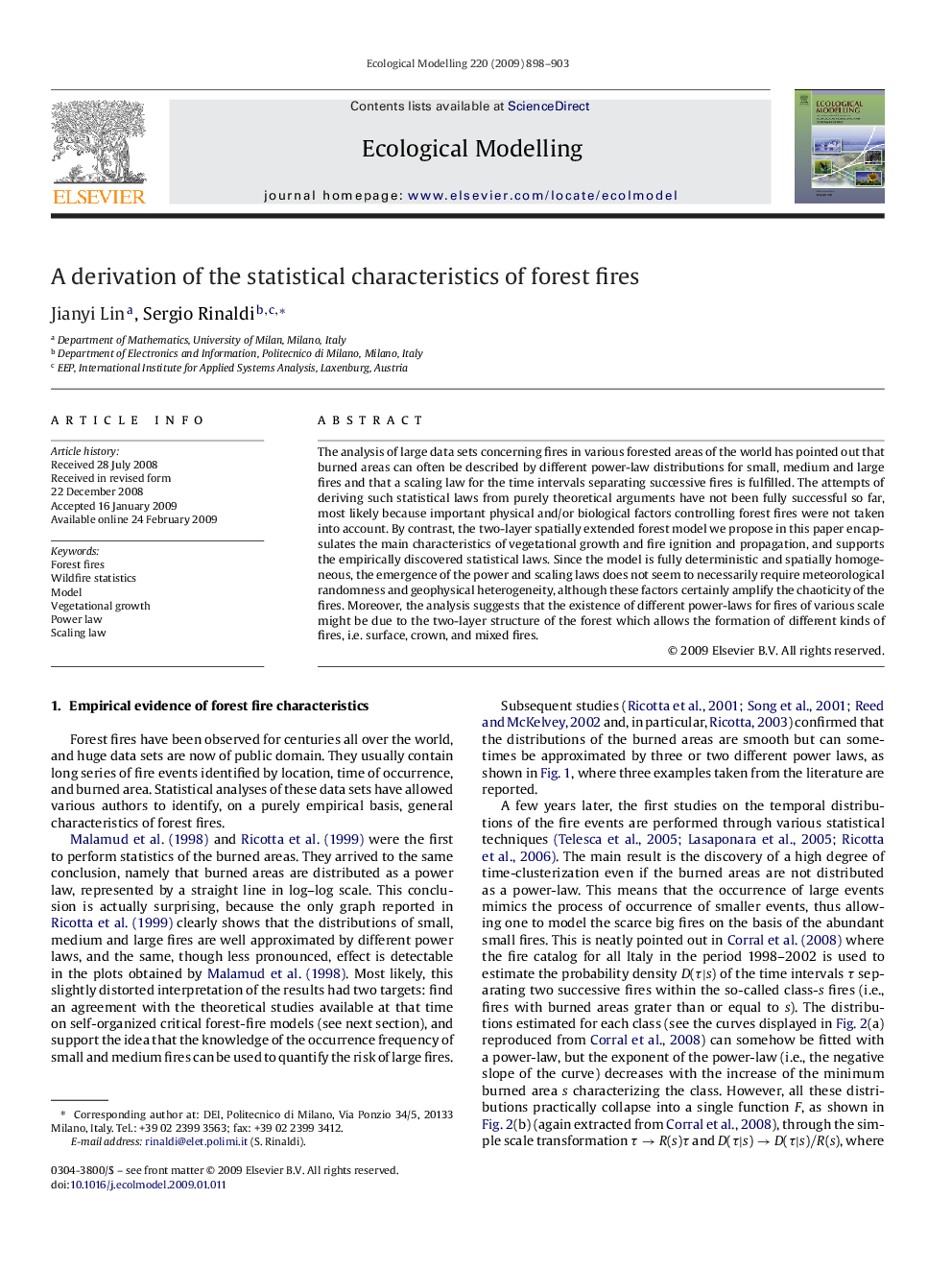| Article ID | Journal | Published Year | Pages | File Type |
|---|---|---|---|---|
| 4377593 | Ecological Modelling | 2009 | 6 Pages |
Abstract
The analysis of large data sets concerning fires in various forested areas of the world has pointed out that burned areas can often be described by different power-law distributions for small, medium and large fires and that a scaling law for the time intervals separating successive fires is fulfilled. The attempts of deriving such statistical laws from purely theoretical arguments have not been fully successful so far, most likely because important physical and/or biological factors controlling forest fires were not taken into account. By contrast, the two-layer spatially extended forest model we propose in this paper encapsulates the main characteristics of vegetational growth and fire ignition and propagation, and supports the empirically discovered statistical laws. Since the model is fully deterministic and spatially homogeneous, the emergence of the power and scaling laws does not seem to necessarily require meteorological randomness and geophysical heterogeneity, although these factors certainly amplify the chaoticity of the fires. Moreover, the analysis suggests that the existence of different power-laws for fires of various scale might be due to the two-layer structure of the forest which allows the formation of different kinds of fires, i.e. surface, crown, and mixed fires.
Related Topics
Life Sciences
Agricultural and Biological Sciences
Ecology, Evolution, Behavior and Systematics
Authors
Jianyi Lin, Sergio Rinaldi,
